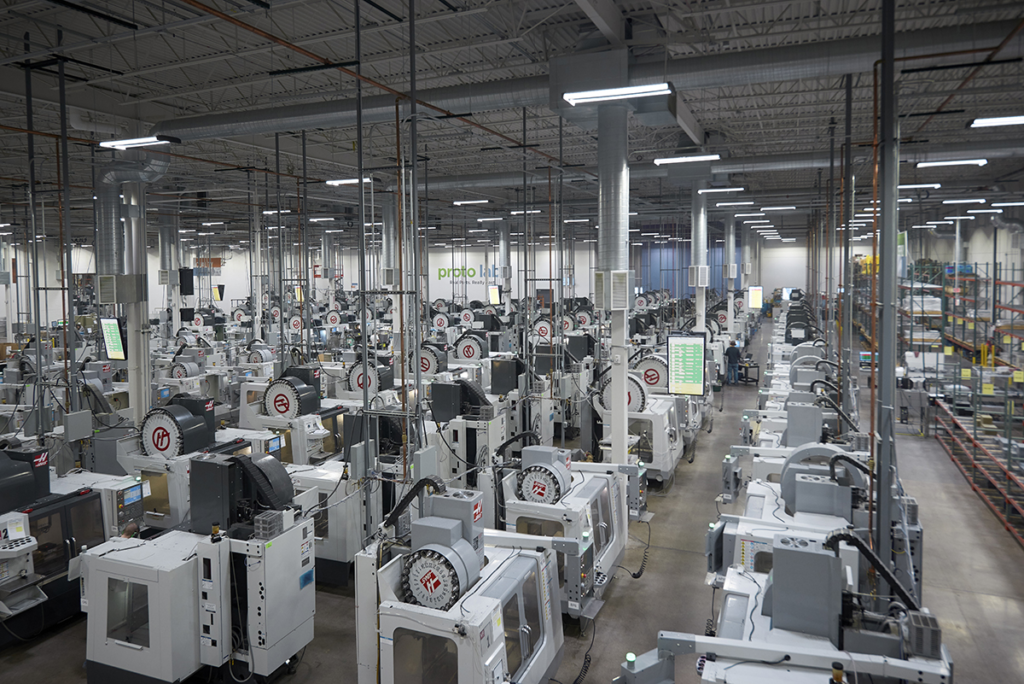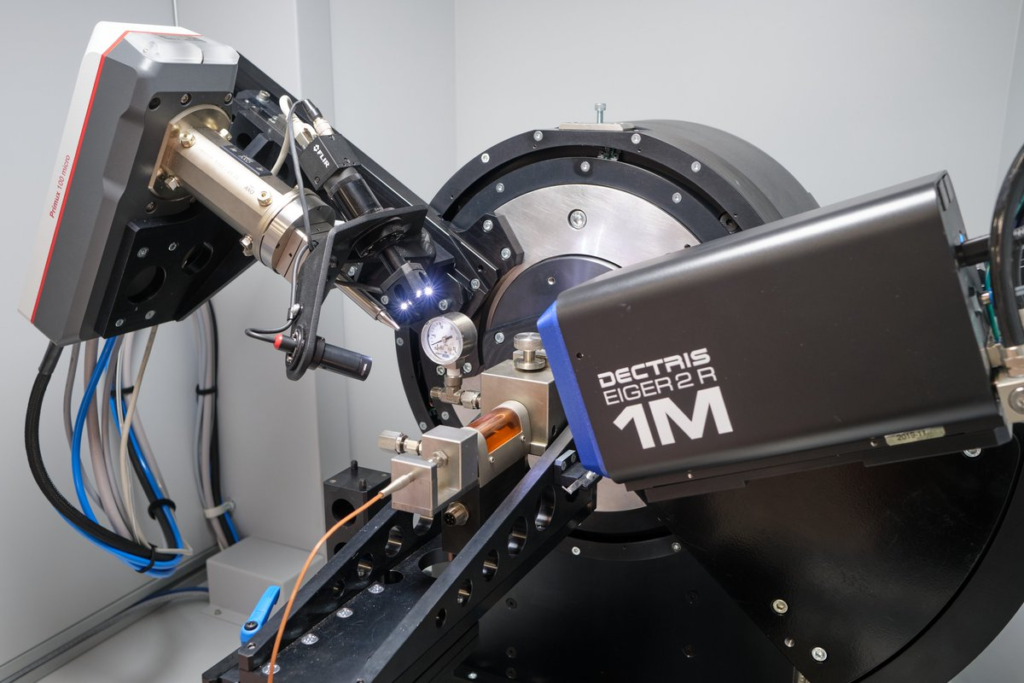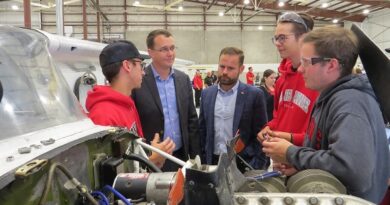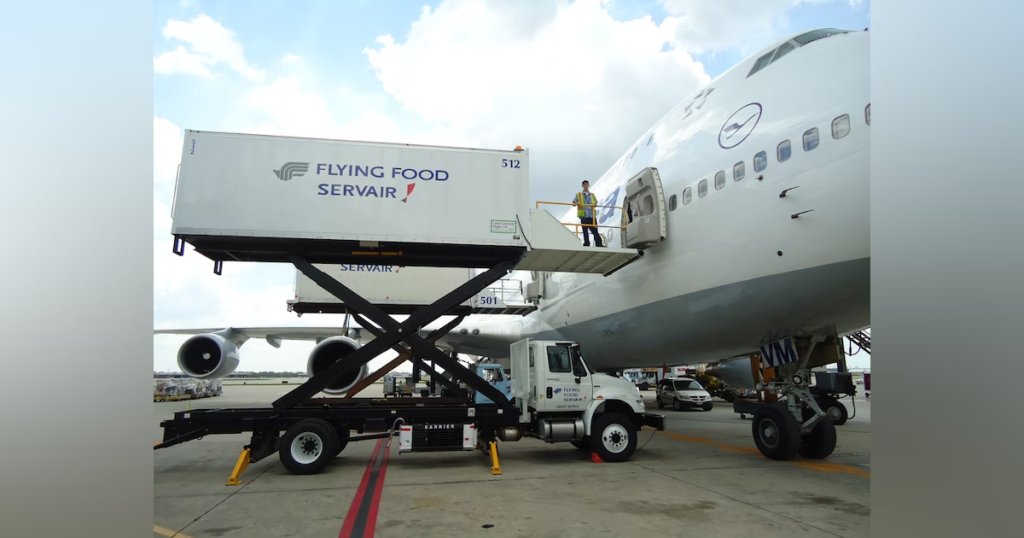Free Executive Proto Manufacturing Course (6Months)
Executive Proto Manufacturing:
Brief Job Description
Individuals at this job need to coordinate with different departments and functions for Manufacturing and R&D of prototype vehicle/parts that will finally be used for testing and validation.
Personal Attributes
The individual should be willing to work at shop floor for long hours. The individual should possess coordination and interpersonal skills. The individual should also be able to demonstrate skills for information ordering, imagination, analytical reasoning, technology, customer orientation, oral expression and comprehension.

Maintain a safe and healthy working environment:

Elements and Performance Criteria
Identify and report the risks identified
To be competent, the user/individual on the job must be able to:
PC1.. Identify activities which can cause potential injury through sharp objects, burns, fall, electricity, gas leakages, radiation, poisonous fumes, chemicals ,loud noise
PC2. Inform the concerned authorities about the potential risks identified in the processes, workplace area/ layout, materials used etc
PC3. Inform the concerned authorities about machine breakdowns, damages which can potentially harm man/ machine during operations
PC4. Create awareness amongst other by sharing information on the identified risks
Create and sustain a Safe, clean and environment friendly work place
To be competent, the user/individual on the job must be able to:
PC5.. Follow the instructions given on the equipment manual describing the operating process of the equipments
PC6.. Follow the Safety, Health and Environment related practices developed by the organization
PC7. Operate the machine using the recommended Personal Protective Equipments (PPE)
PC8. . Maintain a clean and safe working environment near the work place and ensure there is no spillage of chemicals, production waste, oil, solvents etc
PC9. Maintain high standards of personal hygiene at the work place
PC10. Ensure that the waste disposal is done in the designated area and manner as per organization SOP.
PC11. Inform appropriately the medical officer/ HR in case of self or an employees illness of contagious nature so that preventive actions can be planned for others
Knowledge and Understanding (KU)

The individual on the job needs to know and understand:
KU1. relevant standards, procedures and policies related to Health, Safety and Environment followed in the company
KU2. basic knowledge of Safety procedures( fire fighting, first aid) within the organization
KU3. knowledge of various types of PPEs and their usage
KU4. basic knowledge of risks/hazards associated with each occupation in the organization
KU5. how to safely operate various tools and machines and risksassociated with the tools/ equipment
KU6. knowledge of personal hygiene and how an individual an contribute towards creating a highly safe and clean working environment
Generic Skills (GS)
User/individual on the job needs to know how to:
GS1. write basic level notes and observations
GS2. read safety instructions put up across the plant premises
GS3. read safety precautions mentioned in equipment manuals and panels to understand the potential risks associated
GS4. effectively communicate information to team members
GS5. informemployees in the plant and concerned functions about events, incidents & potential risks observed related to Safety, Health and Environment.
GS6. question operator/ supervisor in order to understand the safety related issues
GS7. attentively listen with full attention and comprehend the information given by the speaker during safety drills and training programs
GS8. use common sense and make judgments during day to day basis
GS9. use reasoning skills to identify and resolve basic problems
GS10. use common sense and make judgments during day to day basis
GS11. use reasoning skills to identify and resolve basic problems

Maintain 5S at the work premises:
Elements and Performance Criteria
Ensure sorting
To be competent, the user/individual on the job must be able to:
PC1.. follow the sorting process and check that the tools, fixtures & jigs that are lying on workstations are the ones in use and unnecessary items are not cluttering the workbenches or work surfaces.
PC2.. ensure segregation of waste in hazardous/ non hazardous waste as per the sorting work instructions
PC3.. follow the technique of waste disposal and waste storage in the proper bins as per sop
PC4.. segregate the items which are labelled as red tag items for the process area and keep them in the correct places
PC5. sort the tools/ equipment/ fasteners/ spare parts as per specifications/ utility into proper trays, cabinets, lockers as mentioned in the 5s guidelines/ work instructions
PC6. . ensure that areas of material storage areas are not overflowing
PC7. properly stack the various types of boxes and containers as per the size/ utility to avoid any fall of items/ breakage and also enable easy sorting when required
PC8. return the extra material and tools to the designated sections and make sure that no additional material/ tool is lying near the work area
PC9. follow the floor markings/ area markings used for demarcating the various sections in the plant as per the prescribed instructions and standards
PC10. follow the proper labeling mechanism of instruments/ boxes/ containers and maintaining reference files/ documents with the codes and the lists
Ensure proper documentation and storage ( organizing , streamlining)
To be competent, the user/individual on the job must be able to:
PC11. check that the items in the respective areas have been identified as broken or damaged
PC12. follow the given instructions and check for labelling of fluids, oils. lubricants, solvents, chemicals etc. and proper storage of the same to avoid spillage, leakage, fire etc
PC13. make sure that all material and tools are stored in the designated places and in the manner indicated in the 5s instructions
Ensure cleaning of self and the work place
To be competent, the user/individual on the job must be able to:
PC14. check whether safety glasses are clean and in good condition
PC15. keep all outside surfaces of recycling containers are clean
PC16.. ensure that the area has floors swept, machinery clean and generally clean. in case of cleaning, ensure that proper displays are maintained on the floor which indicate potential safety hazards
PC17.. check whether all hoses, cabling & wires are clean, in goodcondition and clamped to avoid any mishap or mix up
PC18.. ensure workbenches and work surfaces are clean and in good condition
PC19. follow the cleaning schedule for the lighting system to ensure proper illumination
PC20. store the cleaning material and equipment in the correct location and in good condition
PC21. ensure self-cleanliness – clean uniform, clean shoes, clean gloves, clean helmets, personal hygiene
Ensure sustenance
To be competent, the user/individual on the job must be able to:
PC22. follow the daily cleaning standards and schedules to create a clean working environment
PC23. attend all training programs for employees on 5 s
PC24. support the team during the audit of 5 s
PC25. participate actively in employee work groups on 5s and encourage team members for active participation
PC26. follow the guidelines for what to do and what not to do to build sustainability in 5s as mentioned in the 5s check lists/ work instructions
Knowledge and Understanding (KU)
The individual on the job needs to know and understand:
KU1. relevant standards, procedures and policies related to 5S followed in the company
KU2. have basic knowledge of 5S procedures
KU3. know various types 5s practices followed in various areas
KU4. understand the 5S checklists provided in the department/ team
KU5. have skills to identify useful & non useful items
KU6. have knowledge of labels , signs & colours used as indicators
KU7. knowledge on how to sort and store various types of tools, equipment, material etc.
KU8. know , how to identify various types of waste products
KU9. understand the impact of waste/ dirt/ dust/unwanted substances on the process/ environment/ machinery/ human body
KU10. have knowledge of best ways of cleaning & waste disposal
KU11. understand the importance of standardization in processes
KU12. understand the importance of sustainability in 5S
KU13. have knowledge of TQM process
KU14. have knowledge of various materials and storage norms
KU15. understand visual controls, symbols, graphs etc.
Generic Skills (GS)
User/individual on the job needs to know how to:
GS1. write basic level notes and observations
GS2. note down observations (if any) related to the process
GS3. read 5S instructions put up across the plant premises
GS4. effectively communicate information to team members inform employees in the plant and concerned functions about 5S
GS5. question the process head in order to understand the 5S related issues
GS6. attentively listen with full attention and comprehend the information given by the speaker during 5S training programs
GS7. use common sense and make judgments during day to day basis
GS8. use reasoning skills to identify and resolve basic problems using 5S
GS9. persuade co team members to follow 5 S
GS10. ensure that the co team members understand the importance of using 5 S tool
GS11. use innovative skills to perform and manage 5 S activities at the work desk and the shop floor
GS12. exhibit inquisitive behaviour to seek feedback and question on the existing set patterns of work
GS13. do what is right, not what is a popular practices
GS14. follow shop floor rules& regulations and avoid deviations; make 5S an integral way of life
GS15. ensure self-cleanliness on a daily basis
GS16. demonstrate the will to keep the work area in a clean and orderly manner
Develop the prototype for existing product modification:
Elements and Performance Criteria
Design release for proto parts/vehicle
To be competent, the user/individual on the job must be able to:
PC1.. coordinate internally with r&d for the design release of proto vehicle/parts of the existing model
PC2.. check what are the changes in product have been made by R&D with respect to existing model in terms of – product design changes – product dimensional changes- product material strength/composition changes
PC3.. ensure co-ordination & communication/documentation of those changes suggested by r&d team for in-house and vendor sourcing of the required parts
PC4.. sign off the proto- stage after release as per SOP
In-house and sourcing from vendor for proto parts
To be competent, the user/individual on the job must be able to:
PC5.. check based on the change suggested whether modified part is being manufactured in- house or sourced from different vendor
PC6.. release the modified part design to in-house manufacturing unit or to the vendor depending upon from where modified part can be sourced
PC7.. coordinate with in-house manufacturing unit and vendor for timeline for delivering modified parts based on parts modification feasibility
PC8.. ensure that parts are getting delivered to the r&d department meeting the timeline requirement
Coordinate for Proto manufacturing and validation
To be competent, the user/individual on the job must be able to:

PC9.. coordinate with production team for proto manufacturing as per design released by r&d department; ensure adequate numbers as may be required for customer/ verification and validation are planned.
PC10.. based on production schedule inform the time line to the testing and validation team for proto testing and validation
PC11.. handover the proto vehicle/part to the testing validation team after production of the same
PC12.. co-ordinate with materials lab, qa, standards room etc for verification of the dimensional and material /special characteristics as necessary for the change in the design at appropriate stage.
PC13.. keep records maintaining traceability to facilitate interpretation of test results later.
Knowledge and Understanding (KU)
The individual on the job needs to know and understand:
KU1. product portfolio of organization
KU2. the manufacturing processes of organization
KU3. the list of approved vendors for the outsourced materials
KU4. protocol for communication with various department
KU5. personnel and other HR policies of the organization
KU6. good understanding of prototyping and testing process
KU7. understanding on homologation and validation process
KU8. knowledge in tools like CAD, CAM,PRO -E etc
KU9. information systems like SAP, ERP,PLM etc.
Generic Skills (GS)
User/individual on the job needs to know how to:
GS1. read and understand the usage of different parts in the vehicle
GS2. good product knowledge and strong coordination skill
GS3. document all the prototyping activities findings in form of MS Word documents , MS Excel spreadsheets etc.
GS4. communicate with the concerned departments for gathering part/component drawings and other related information
GS5. follow up with concerned manufacturing unit on the progress of prototype development
GS6. work effectively with the NPD team members for ensuring proto manufacturing in a timely and efficient manner
GS7. share operation knowledge with colleagues and peers
GS8. escalate on immediate basis in case parts are timely not available in-house or at the vendor end
GS9. work with punctuality and commitment
GS10. identify problems (technical and non-technical), disruptions and delays

Develop the prototype based on future business plan:
Elements and Performance Criteria
Coordinate with R&D for new proto design release
To be competent, the user/individual on the job must be able to:
PC1. coordinate internally with R&D for the design release of proto vehicle/parts of the new product based on customer/market requirement
PC2. see the simulation of the complete product for better understanding about the new proto
PC3. support in evaluating the design from manufacturing/assembly line perspective on the early stage of the project
PC4. coordinate in bridging the gap, if any, related to new proto development between design team and product team
PC5. ensure documentation of new product requirement suggested by R&D team
PC6. sign off the proto- stage after release of SOP
Sourcing of new proto parts
To be competent, the user/individual on the job must be able to:
PC7. check and record what are new product required for new proto manufacturing
PC8. coordinate with strategic sourcing for development and sourcing of new parts as per design release
PC9. order the parts for prototype assembly according to design release
PC10. coordinate with in-house manufacturing unit and vendor for timeline for delivering modified parts based on parts modification feasibility
PC11. ensure parts are getting delivered to the R&D department meeting the timeline requirement
Coordinate for Proto manufacturing and validation
To be competent, the user/individual on the job must be able to:
PC12. coordinate with production team for new proto manufacturing as per design released by R&D department; ensure adequate numbers as may be required for customer/ verification and validation are planned.
PC13. based on production schedule inform the time line to the testing and validation team for proto testing and validation
PC14. handover the proto vehicle/part to the testing validation team after production of the same Co-ordinate with Materials Lab, QA, standards Room etc for verification of the dimensional and material / special characteristics as necessary for the change in the design at appropriate stage . Keep records maintaining traceability to facilitate interpretation of test results later.
Knowledge and Understanding (KU)

The individual on the job needs to know and understand:
KU1. roles, responsibilities and scope of work for different departments
KU2. product portfolio of organization
KU3. the manufacturing processes of organization
KU4. the list of approved vendors for the outsourced materials
KU5. protocol for communication with various department
KU6 Personnel and other HR policies of the organization
KU7. good understanding of prototyping and testing process
KU8. understanding on homologation and validation process
KU9. knowledge in tools like CAD, CAM,CAE,PRO-E etc
KU10. information systems like SAP, ERP etc
KU11. knowledge of simulation software, DFMEA, APQP
Generic Skills (GS)
User/individual on the job needs to know how to:
GS1. read and understand the usage of different parts in the vehicle
GS2. good product knowledge and strong coordination skill
GS3. document all the prototyping activities findings in form of MS Word documents , MS Excel spreadsheets etc.
GS4. communicate with the concerned departments for gathering part/component
GS5. follow up with concerned manufacturing unit on the progress of product medication
GS6. writing and reading skill to communicate the modification suggested
GS7. work effectively with the team members for ensuring proto manufacturing in a timely and efficient manner
GS8. share operational knowledge with colleagues and peers
GS9. work on escalation on immediate basis in case parts are timely not available in-house or at the vendor end
GS10. work with punctuality and commitment
GS11. identify problems (technical and non-technical), disruptions and delays
Assessment Guidelines:
- Criteria for assessment for each Qualification Pack will be created by the Sector Skill Council. Each Element/ Performance Criteria (PC) will be assigned marks proportional to its importance in NOS. SSC will also lay down proportion of marks for Theory and Skills Practical for each Element/ PC.
- The assessment for the theory part will be based on knowledge bank of questions created by the SSC.
- Assessment will be conducted for all compulsory NOS, and where applicable, on the selected elective/option NOS/set of NOS.
- Individual assessment agencies will create unique question papers for theory part for each candidate at each examination/training center (as per assessment criteria below).
- Individual assessment agencies will create unique evaluations for skill practical for every student at each examination/ training center based on these criteria.
- To pass the Qualification Pack assessment, every trainee should score the Recommended Pass % aggregate for the QP.
- In case of unsuccessful completion, the trainee may seek reassessment on the Qualification Pack.






